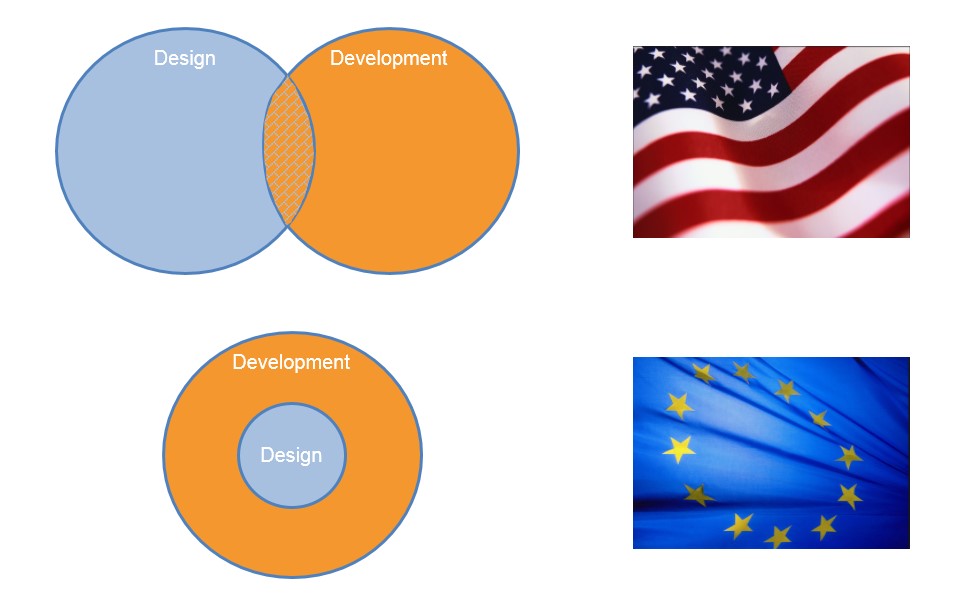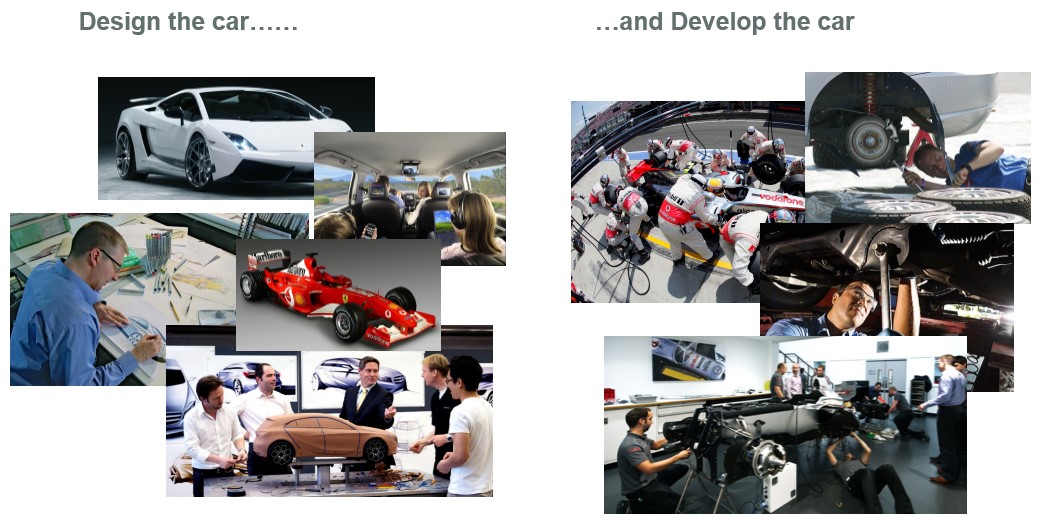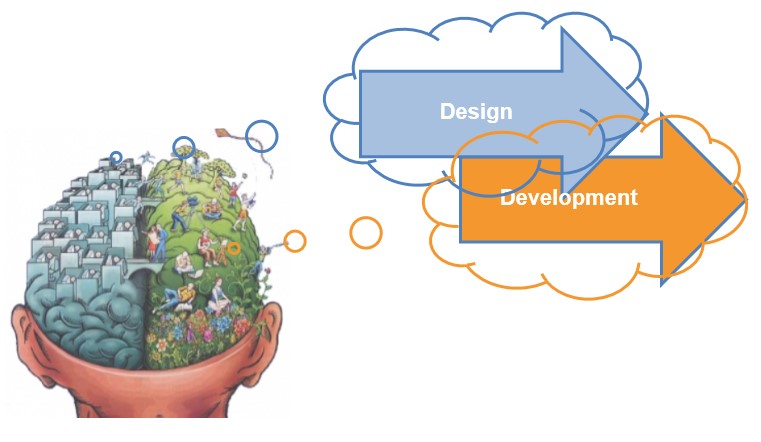Organization design vs organization development
What’s the difference between Organization Design and Organization Development?
Is there a difference between Organization Design and Organization Development? Many people believe Design falls within Development while others see them as fields that belong in fundamentally different parts of the organization, i.e. Design should sit with the strategy function/COO while Development belongs with HR.
What is Organization Design?
Organization design refers to the process of shaping an organization’s structure and roles to align with its objectives, strategy and the environment in which it operates. This involves defining how tasks are divided, resources are allocated and departments are coordinated.
By carefully designing its architecture, an organization ensures that it can efficiently respond to market changes, innovate and meet customer needs. The process encompasses decisions about hierarchy, control systems, information flows and the integration of various functions.
Effective organization design not only optimizes operational efficiency but also enhances flexibility, enabling the organization to adapt to new challenges and opportunities. Ultimately, it is a strategic effort to create a framework that supports the achievement of business goals, fosters a positive organizational culture and builds a sustainable competitive advantage.
What is Organization Development?
Organizational development is dedicated to expanding the knowledge and effectiveness of people to accomplish more successful organizational change and performance.
It focuses on improving organizations through the people within them, employing planned interventions in the organization’s processes, utilizing behavioral science knowledge. Organization Development aims to increase an organization’s adaptability to external changes and internal innovations by enhancing its processes, culture and structure. Strategies may include team building, organizational assessments, change management, and leadership development.
The ultimate goal of Organization Development is to develop the organization’s capacity to maintain a continuous state of innovation and adaptation to a constantly changing environment. Through Organization Development, organizations strive to improve their effectiveness and health, ensuring long-term success and sustainability.
Difference Between Organization Development and Organization Design Explained
| Aspect | Organization Design | Organization Development |
| Definition | Concerned with determining the optimal structure and arrangement of resources within an organization to achieve its goals and objectives. | Focused on enhancing the organization’s capacity to change and adapt through interventions aimed at improving processes, systems, and culture. |
| Focus | Primarily centered on structural elements such as roles, responsibilities, hierarchies, processes, and systems. | Emphasizes human factors including behaviors, attitudes, skills, and relationships within the organization. |
| Timeframe | Typically occurs at the outset of organizational change or when a significant restructuring is needed. | Often an ongoing process aimed at continuous improvement and adaptation to changing circumstances. |
| Approach | Involves a systematic analysis of organizational goals, strategies, and environmental factors to design an appropriate structure. | Utilizes various interventions such as training, coaching, team-building, and culture change initiatives to foster organizational growth and effectiveness. |
| Outcome | Results in a blueprint or framework for organizing resources efficiently and effectively to achieve strategic objectives. | Aims to enhance organizational effectiveness, employee satisfaction, and adaptability to change. |
| Relationship with HR | Often seen as belonging to the strategy function or COO’s domain, sometimes distinct from HR. | Typically aligned with HR functions as it involves working closely with individuals and teams to improve performance and develop capabilities. |
| Importance of People | May not explicitly focus on people or behaviors in its definition or execution, although these factors indirectly influence design decisions. | Places a significant emphasis on understanding and influencing human behavior to drive organizational change and improvement. |
| Interrelationship | While distinct, it is interrelated with development; development activities may be informed by the organization’s design. | Integral to development; design decisions influence the effectiveness and feasibility of development initiatives. |
| Role in Organizational Success | Provides the structural foundation necessary for organizational effectiveness and performance. | Facilitates the implementation of organizational change and improvement initiatives to enhance competitiveness and adaptability. |
Is there a difference between Organization Design and Organization Development? Many people believe Design falls within Development while others see them as fields that belong in fundamentally different parts of the organization, i.e. Design should sit with the strategy function/COO while Development belongs with HR.
In discussing this topic with Mark LaScola (Mark, an American, runs one of the leading niche but very much global Organisation Design firms and has been an Organisation Design practitioner for 30+ years), his view is that Europeans are confused about the difference between the two ODs while Americans have a very clear sense of their separation. In Europe they are seen as similar fields, with Design being a subset of Development. The below Venn Diagrams depict these two world views:
So what is the difference? Does the difference matter and if it does matter, in what way?
I really like Naomi Stanford’s analogy:
“Organization design is deciding first what is the purpose of the car that you are about to design e.g. is it to cross the desert? Is it to win a Formula 1 race? Is it to transport two adults and three children to a party? Then designing and delivering a car that is fit for that purpose.
Organization development is about keeping that vehicle in the condition necessary to achieve the purpose e.g. using the right fuel, having it serviced regularly, teaching the driver how to drive it to maximize its performance, and so on.”
The organisation design definition does not mention people or behaviours, while the organisation development definitions are all about these. In that sense, Design comes first.
All too frequently the Design is done around the people, not around the strategic requirements. This leads to bad design, because in practice it is hard to differentiate the role from the person, as we are not just our perfect job specs. Having a purely engineering, mathematical perspective can lead to some pretty stupid people-related decisions. In so many ways structure, governance rules and interfaces have a dramatic impact on behaviour; defining who decides what has a pretty significant impact on how people act, who they need to influence and who needs to interact with whom.
So in my view, the two ODs can never be truly separated. Equally, I believe you have to start somewhere. So, start with what needs to happen – the ideal design for a given set of criteria – and then think through the impact. Think through whether too many trade-offs are being made and if the desired behavioural outcomes are going to be met. Think through ‘How Will it Work in Practice’ or the ‘HOWWIP’. Think through the risks and people trade-offs, iterate the design if needs be (and iteration will almost certainly be needed) until the optimal design is established.
I regard them, therefore, as quite different but “mono-directionally interrelated disciplines”. What I mean is, you can’t have design without development BUT you can have development without design.
The way of thinking through a design process is quite different to that of a development process. It is more physical. It is more concrete. It is more left brain. But, ignore development and almost certainly the whole design will come to catastrophic implosion under the weight of real politics with a small ‘p’. That means that those analytically driven souls like myself have to get to grips with a field that doesn’t come naturally. By the same token, however, those who come from the development side of the equation have to equally get to grips with the design field, and not just use the good old development tools & techniques as a way to fumble through. Human skills, coaching skills, consulting skills can achieve amazing results, but there are some fundamental design techniques that need to be applied too. Design and development should team together, and to do so we still need a good appreciation of each other’s worlds.
In discussing this topic with Mark LaScola (Mark, an American, runs one of the leading niche but very much global Organisation Design firms and has been an Organisation Design practitioner for 30+ years), his view is that Europeans are confused about the difference between the two ODs while Americans have a very clear sense of their separation. In Europe they are seen as similar fields, with Design being a subset of Development. The below Venn Diagrams depict these two world views:

So what is the difference? Does the difference matter and if it does matter, in what way?
I really like Naomi Stanford’s analogy:
“Organization design is deciding first what is the purpose of the car that you are about to design e.g. is it to cross the desert? Is it to win a Formula 1 race? Is it to transport two adults and three children to a party? Then designing and delivering a car that is fit for that purpose.
Organization development is about keeping that vehicle in the condition necessary to achieve the purpose e.g. using the right fuel, having it serviced regularly, teaching the driver how to drive it to maximize its performance, and so on.”

The organisation design definition does not mention people or behaviours, while the organisation development definitions are all about these. In that sense, Design comes first.
All too frequently the Design is done around the people, not around the strategic requirements. This leads to bad design, because in practice it is hard to differentiate the role from the person, as we are not just our perfect job specs. Having a purely engineering, mathematical perspective can lead to some pretty stupid people-related decisions. In so many ways structure, governance rules and interfaces have a dramatic impact on behaviour; defining who decides what has a pretty significant impact on how people act, who they need to influence and who needs to interact with whom.
So in my view, the two ODs can never be truly separated. Equally, I believe you have to start somewhere. So, start with what needs to happen – the ideal design for a given set of criteria – and then think through the impact. Think through whether too many trade-offs are being made and if the desired behavioural outcomes are going to be met. Think through ‘How Will it Work in Practice’ or the ‘HOWWIP’. Think through the risks and people trade-offs, iterate the design if needs be (and iteration will almost certainly be needed) until the optimal design is established.
I regard them, therefore, as quite different but “mono-directionally interrelated disciplines”. What I mean is, you can’t have design without development BUT you can have development without design.
The way of thinking through a design process is quite different to that of a development process. It is more physical. It is more concrete. It is more left brain. But, ignore development and almost certainly the whole design will come to catastrophic implosion under the weight of real politics with a small ‘p’. That means that those analytically driven souls like myself have to get to grips with a field that doesn’t come naturally. By the same token, however, those who come from the development side of the equation have to equally get to grips with the design field, and not just use the good old development tools & techniques as a way to fumble through.
Human skills, coaching skills, consulting skills can achieve amazing results, but there are some fundamental design techniques that need to be applied too. Design and development should team together, and to do so we still need a good appreciation of each other’s worlds.
